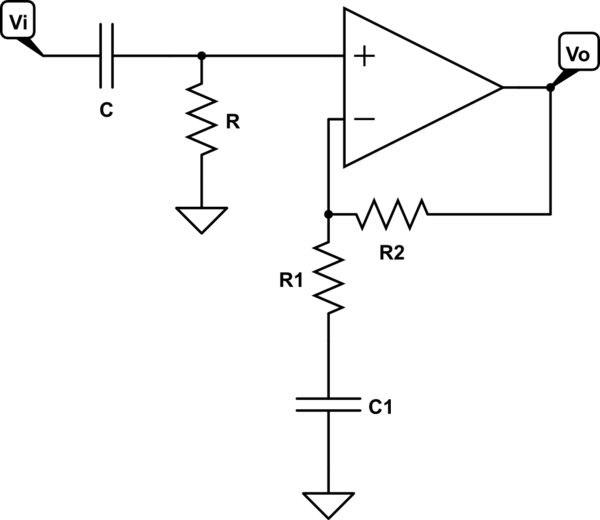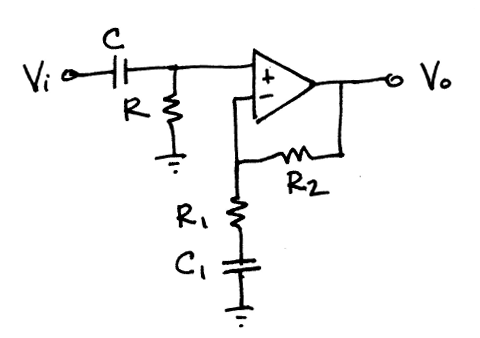Regarding the chosen answer for: How does this OP-AMP non-inverting amplifier work?How does this OP-AMP non-inverting amplifier work?
The following circuit is given, and it says that $$F_c = \frac{1}{2\pi R_1C_1}$$

simulate this circuit – Schematic created using CircuitLab
However, this doesn't seem right to me, even though I have found the same example and formula elsewhere on the web (e.g., "Non-inverting amplifier – alternative" at http://stompville.co.uk/?p=470).
To me it doesn't take into account the value of the op amp feedback resistor (\$R_2\$ in the sketch above).
Would the cut-off frequency not be based upon (\$R_1+R_2\$)? If not, why not?
My point is that the only way the capacitor can charge or discharge is through the output of the op-amp, so surely the feedback resistor is also critical?

